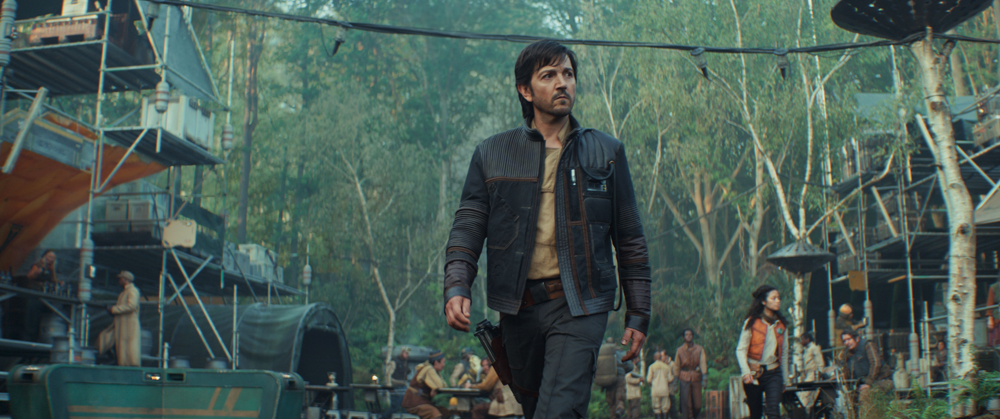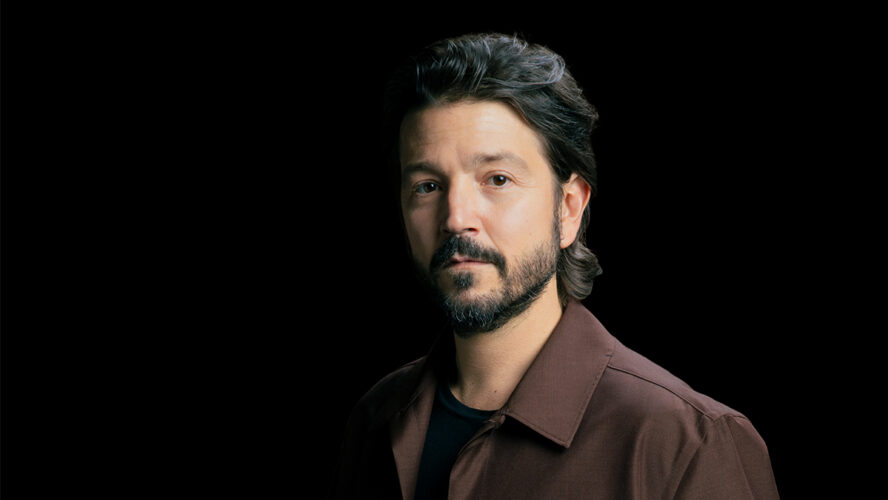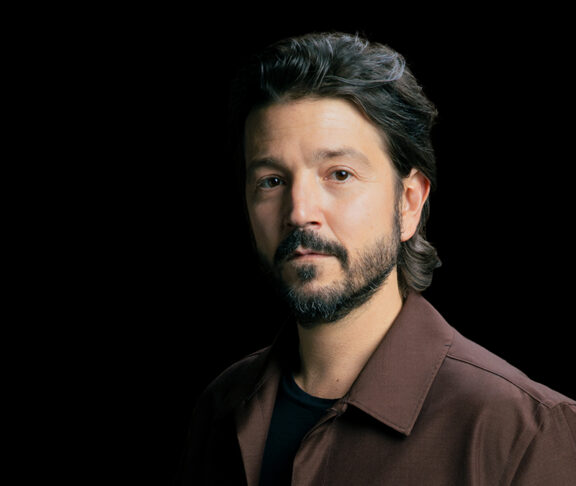Actor, director, and activist Diego Luna reflects on his artistic journey, Mexican roots, and the role of storytelling in driving change.
You have had such a dynamic career. What have been some defining moments for you as an artist?
I grew up in the theater. My father was a set designer, and my mother was a costume designer. For me, life was all about what was happening in the theater. That was very important for what I do and what kind of director and actor I want to be. A lot has to do with the theater I got to see, what that generation was doing in Mexico.
It was a very vibrant time for theater — independent voices, very strong perspectives. I was witnessing that. I got to see many actors who were crucial for me: Daniel Jiménez Cacho, Memo Gil, Julieta Gurrola, Margarita Sanz, Raxelli Ramírez, Damián Alcázar, and Juan Carlos Colombo. I’m obviously missing many, but I was confronted with great acting — very interesting, very subversive, strong voices.
What drew you to storytelling in the first place? Has your purpose evolved over the years?
Yes, definitely. The beauty of this career is that it evolves constantly. You transform as an artist as you grow. The stories I can tell today come from the perspective of someone being a father and understanding what it means to bring someone into this world, to see your life through someone else’s experience. At 20, I couldn’t even imagine that. I’m pretty sure what I’ll be doing in the next 10 or 20 years will also be very different.
As an actor, it’s obvious: The characters I can portray today are richer, more interesting, more complex than the ones I was doing at 15, 25, or 35. As a director, the films I’ve made are like marks in my life. Important things were happening with each one.
The first time I directed fiction, “La Belle,” I was becoming a father. That film was about the absence of a father, about a young kid. Then, I made “Cesar Chavez” in California because we were living there and my son was born there. I had a Mexican-American son, and I wanted to tell a story about a Mexican-American movement. That was important. Then, I did a film about a daughter saying goodbye to her father, and I have a daughter. What I’m trying to say is each film reflects a moment in my life. I can revisit those films and see where I was and what I was thinking.

You’ve worked on both sides of the camera as an actor, producer, and director. How does that fulfill you?
I started directing later in life. First, I was an actor, then a producer, and finally a director. It took me time to get to directing, time to have my own story to tell. I never had to make a living from directing, so everything I’ve directed comes from the heart, from a real need.
Being an actor was the exact opposite. I didn’t even have to think about it. I started acting at 7, doing theater at 9, film at 11, and TV soon after. Since then, I haven’t stopped. Acting has always felt natural, while directing came from years of witnessing, producing, and finally reaching the point where I had both the tools and the need to tell my own stories.
When you direct, you put everything out there; you have to be as open as possible. I had to find myself ready for that.
What do you wish more people understood about growing up in Mexico and building a global career?
Everything I do is Mexican, somehow. This is where I learned to see, to love, and to belong. Therefore, it doesn’t matter where I work; what comes out has a strong connection with Mexico and with who I am. My stronger connections are here, and my perspective always feels very Mexican, but traveling with my work has been important.
Getting to know how others work and approach storytelling has been very important — finding out that there’s not such a big difference. A lot of times, when you’re doing promotion, you’re confronted with the question of “What is different from working in Mexico and the States?” Or, “What is different from working in Mexico and England, or Spain, Italy, or other countries of Latin America?”
In the end, once you are in, once you’re part of a family, once you’re working, it’s always very diverse. There are always very different points of view and perspectives interacting, but what happens in essence is quite similar. It doesn’t matter the size of the production, the language, or the country; there is always something natural about moving somewhere else and telling stories. As the audience, that’s exactly what happens to you: You sit down in front of a screen and you see a film that was shot in a very different context than yours, yet it ends up talking about you personally, about your intimate world. It doesn’t matter who you’re seeing on that screen.
Therefore, if we, as an audience, can travel, we as artists can travel to tell our stories; they’ll be ours anyway. It’ll be a reflection of what matters to us, but at the same time we’ll be interacting with something that is teaching us and showing us something new.
What do you wish more people understood about Latino identity and experience, especially in Hollywood?
I would say that the most important thing — and this is just talking from my own perspective — is that I didn’t know exactly what it was to be a Latino. It wasn’t until I started working in the States or in Spain that I started experiencing being a Latino. Before, I was just a Mexican going somewhere else. Then, when you get there, when you become the other, the unknown, then there’s a need to place you somewhere, right?
But it’s interesting because being a Latino is being part of or having a connection with Latin America, which is a very vast, diverse, and interesting piece of this world. There is so much in common, but also so many differences. Culturally, it’s so interesting, Latin America. It’s sometimes kind of unfair to try to put everything in just one pot.
At the same time, there is a strength in being a Latino, a strength that we have to understand and use to our benefit. There’s something that connects us. There’s a strength and a responsibility, also.
You’ve been a vocal advocate for equality and inclusion in media. Where do you think we’re making progress, and where do you feel we are falling short?
Well, there’s still a lot to do, but I think I am very pleased with the changes I see. I see audiences getting the power. I think it’s in the hands of the audience, a lot of the possibilities of reshaping what the offer is. It’s audiences who are saying, “I want to see this,” and “I don’t want to see that.” You send a message every time you buy a ticket. You send a message every time you don’t. You send a message when you click. You send a message when you don’t. It’s interesting that the connection between those who are telling stories and the audience is more horizontal, and with less noise in between.
I think we have to fight for specificity. We have to fight for the opportunity to tell the stories that matter to us. I’ve always had this feeling because I’ve always done theater. Theater has been the place where I can say whatever I want to say. Obviously, putting together a theater play was way easier than making a film, but today, there are possibilities of making a film, or different ways of visual storytelling, so I think it’s good times. I think it’s good times and there’s a lot more to do.
What kind of legacy do you hope to leave for the next generation of Latino creatives?
I don’t know. I don’t think that way. The most I can say is that I want to make sure that whatever I do, my kids can watch and feel proud. I just want to make sure whatever I’m doing is what matters to me in the moment. That’s how I approach what I do.
What’s the cultural tradition, phrase, or habit from your upbringing that still grounds you today?
I would say Day of the Dead. You know, I think it shapes you. It shapes your relationship with loss, with absence, with grief, with guilt. When someone’s not there anymore, you can still have a connection. There’s not a complete absence unless you forget. Therefore, it’s not over yet. You can work with whatever needs you have to solve. Those connections are not lost forever, never. They’re always with you.
In addition to your creative work, you’ve been active in amplifying social causes. How do you think culture, business, and activism can intersect meaningfully?
Telling a story comes with the responsibility of making sure you believe someone else should take the time for what you want to tell. Therefore, one of the big responsibilities you have as an artist is to be informed and to be affected by what happens out there. It’s crucial and essential. I think today, we can do a lot.
I am hoping that what we went through with the pandemic is not completely forgotten. We were forced to move in, start taking care of what was just right there in front of us. The way we consume changed, the way we spend our days, the way we show love, and I’m hoping we don’t forget that. I’m hoping that wasn’t for granted.
I think there is a lot we should and can be doing in our communities. The big change happens here, probably just in front of you, just next door. I want to think that way because that’s also, I think, the only way we have today. I also think we have to take responsibility for those who are in charge, for those whom we put in power.
I think there are more and more expressions of authoritarian leadership that we should be questioning. We have to get involved if we don’t see things happening the way we want. If society is not where we can all be included, where we all have room to be who we want to be, I think it’s time to get involved. It’s time to get worried, and it’s time to act. That’s a very personal decision, but this world, this reality, needs citizens who are ready to participate.


